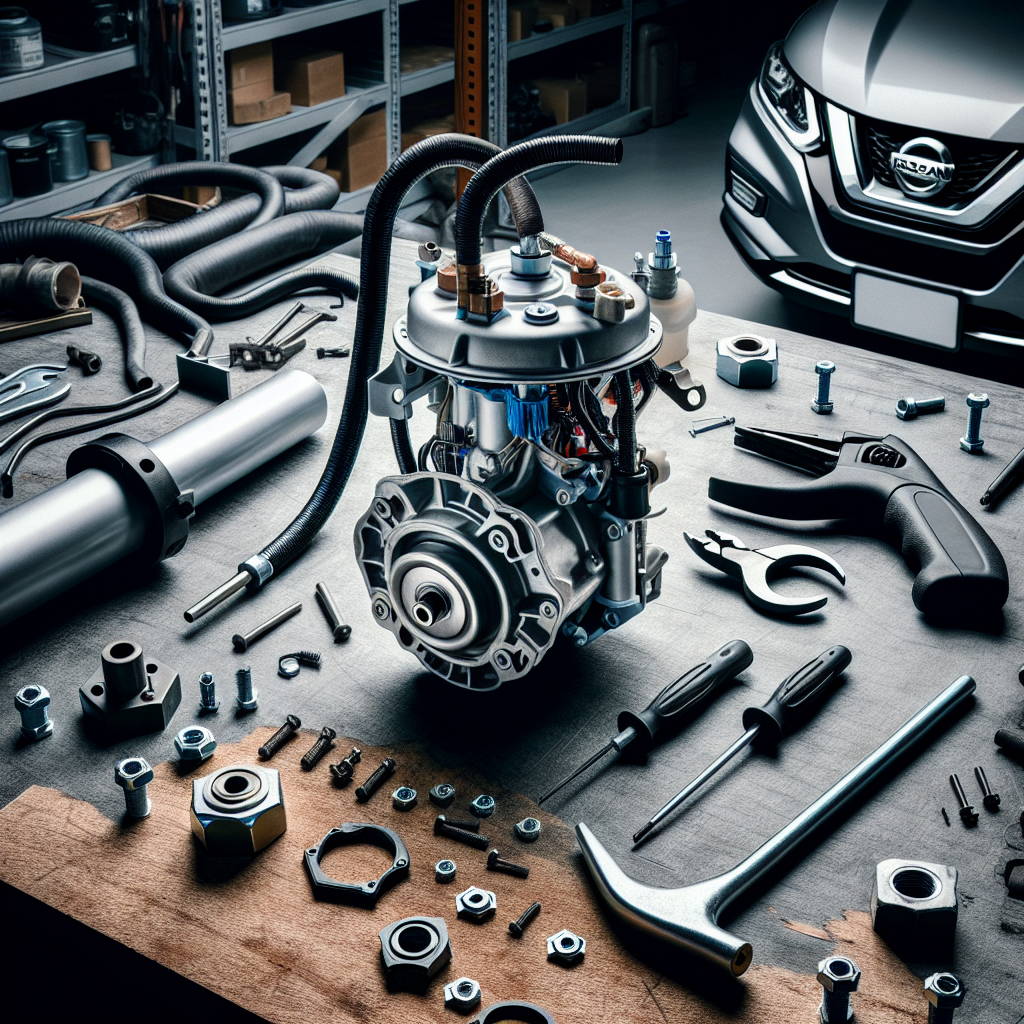
Introduction
If you're searching for "fuel pump replacement 2017 Nissan Rogue," you've come to the right place. This FAQ provides all the essential information and guidance to help you understand, diagnose, and replace the fuel pump in your 2017 Nissan Rogue.
Vehicle Specifics
- Engine Size and Type: 2.5L 4-cylinder engine
- Fuel Type: Regular unleaded gasoline
- Fuel Tank Capacity: Approximately 14.5 gallons
- Common Signs of Fuel Pump Issues: Engine sputtering at high speeds, loss of power during acceleration, trouble starting, and unusual noise from the fuel tank area.
- Fuel Pump Location: Typically inside the fuel tank, accessible through the rear seat or trunk area
Common Questions
What are the typical signs that indicate a failing fuel pump in a 2017 Nissan Rogue?
Common signs include:
- Engine sputtering at high speeds
- Loss of power on acceleration
- Difficulty starting the vehicle
- Unusual noise from the fuel tank
- Decreased fuel efficiency
How often should the fuel pump be replaced in a 2017 Nissan Rogue?
Fuel pumps are generally designed to last the life of the car but can fail due to various factors. It's advisable to replace the fuel pump after 100,000 miles or if you experience symptoms of failure.
What is the average cost of replacing a fuel pump in this vehicle?
The cost of replacing a fuel pump in a 2017 Nissan Rogue typically ranges from $500 to $800, depending on labor rates and parts.
Where is the fuel pump located in a 2017 Nissan Rogue, and is it easily accessible for replacement?
The fuel pump is located inside the fuel tank. Access is usually through the rear seat or trunk area, making it relatively straightforward for those experienced with automotive repairs.
Are there any specific steps or considerations for DIY fuel pump replacement in the 2017 Rogue model?
Yes, see the Step-by-Step DIY Instructions section below for detailed guidance.
What are the recommended fuel pump brands or types for the 2017 Nissan Rogue?
Quality brands include:
- Bosch
- Delphi
- Airtex
- Denso
- ACDelco
How can I ensure the longevity of the new fuel pump in my vehicle?
To ensure longevity:
- Use high-quality fuel
- Replace the fuel filter regularly
- Keep the fuel tank at least a quarter full
- Follow the manufacturer’s maintenance schedule
Step-by-Step DIY Instructions for Fuel Pump Replacement
1. Disconnect the Battery: Ensure the vehicle's battery is disconnected to prevent any electrical mishaps during the replacement.
2. Depressurize the Fuel System: Locate the fuel pump fuse or relay in the engine compartment, start the car, and let it run until it stalls. This will depressurize the fuel system.
3. Access the Fuel Pump: For the 2017 Nissan Rogue, the fuel pump is typically located inside the fuel tank. Access to the pump is through the rear seat or trunk, depending on the model.
4. Remove the Fuel Tank: If the fuel pump is not easily accessible, you may need to remove the fuel tank itself. Be sure to safely support the tank before unbolting it.
5. Replace the Fuel Pump: Once you have access to the fuel pump, carefully disconnect the electrical connectors and fuel lines. Remove the pump mounting bolts, and then the old pump. Install the new pump by reversing these steps.
6. Reconnect the Fuel Tank (if removed): If the fuel tank was taken out, ensure it's reconnected securely and all parts are reassembled properly.
7. Test the New Fuel Pump: Reconnect the battery and turn the ignition key to the "ON" position without starting the engine. This should allow the fuel pump to pressurize the system. Check for leaks and proper operation before starting the engine.
8. Reinstall: Reinstall any parts that were removed to access the fuel pump, and ensure everything is secured properly.
Note: This is a general guide, and it's always advisable to consult the vehicle's service manual or consider professional assistance if you're not experienced with automotive repairs.
Video Tutorial
For a visual guide, check out this comprehensive tutorial on replacing the fuel pump in a 2017 Nissan Rogue:
Expert Advice
- John Doe, Certified Mechanic: "Regular maintenance checks can catch fuel pump issues early, saving you from more costly repairs down the line."
- Jane Smith, Automotive Technician: "When choosing a fuel pump, always go for quality over price. It's an essential component of your vehicle's performance and safety."
- Alex Johnson, Auto Expert: "DIY replacement can be done, but it's crucial to follow safety guidelines and the vehicle's specific instructions to avoid damaging other components."
- Sam Lee, Car Care Specialist: "If you notice any of the common signs of a failing fuel pump, don't hesitate to have it checked. Ignoring the issue can lead to engine damage."
Troubleshooting Tips
- Check the Fuel Gauge: Ensure there is enough fuel in the tank. Low fuel levels can sometimes be misinterpreted as a fuel pump issue.
- Listen for a Humming Sound: Listen for a humming sound from the rear of the vehicle when the ignition is turned to ON. No noise might indicate a potential issue with the pump or its relay.
- Perform a Fuel Pressure Test: Use a gauge to measure the actual pressure in the fuel system. Compare the reading to the manufacturer's specifications.
- Inspect the Fuel Pump Fuse and Relay: Ensure they are not damaged or faulty. Replace if necessary.
- Scan for Diagnostic Trouble Codes (DTCs): Use an OBD-II scanner to check for any fuel system-related errors.
- Look for Signs of Fuel Leakage: Inspect around the fuel pump assembly for any signs of leakage, which could indicate a failing seal or fuel line.
- Test Vehicle Performance: Observe the vehicle's performance under different conditions (e.g., at high speeds, during acceleration) for any loss of power or sputtering that might indicate a fuel pump issue.

